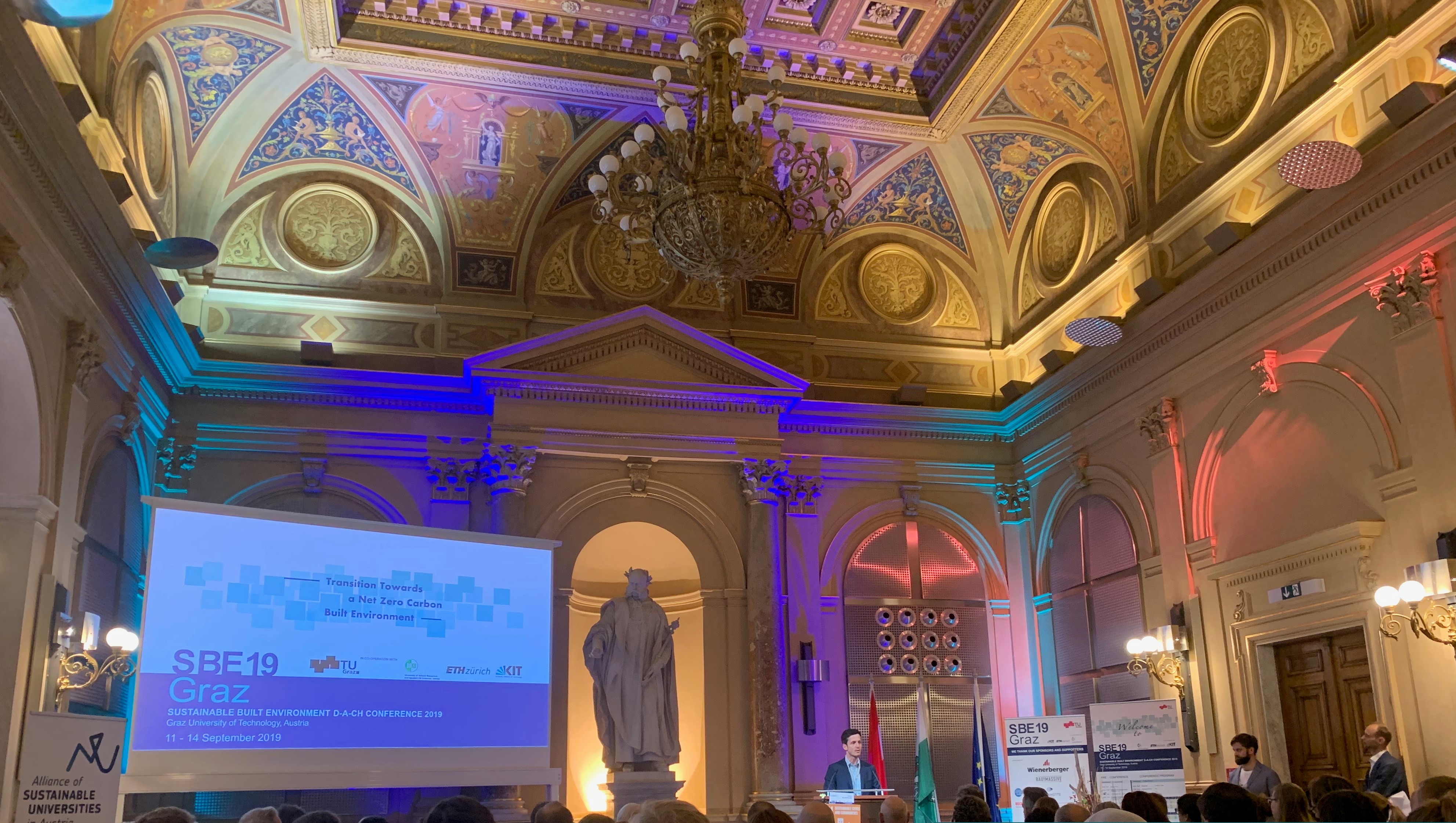Ingrid Bertin participait au SBE19 qui s’est déroulé à Graz en Autriche du 11 au 14 septembre 2019 dernier. Représentant setec tpi et l’Ecole des Ponts ParisTech, elle est intervenue pour présenter l’avancement des travaux menés dans le cadre de sa thèse « Construire pour déconstruire » : « Construction, deconstruction, reuse of the structural elements: the circular economy to reach zero carbon ».
Ces quelques jours, au-delà de l’exposé réalisé, ont permis de nouveaux contacts et de faire le point sur l’avancée scientifique des équipes internationales sur le thème « Transition towards a net zero Carbon Built Environment ». Il était donc question principalement d’Analyse de cycle de vie, et aussi d’innovation pour les matériaux (bas carbone, biosourcé, recyclé), de BIM, d’économie circulaire… The Sustainable Built Environment D-A-CH Conference 2019 (SBE19 Graz) – Transition Towards a Net Zero Carbon Built Environment was held from 11 to 14 September.
Such an event is a contribution to the preparation of the World Conference in 2020 in Gothenburg (WSBE 2020 – Beyond 2020). It was a fantastic opportunity for research scientists, practitioners, politicians and the interested public to exchange on matters regarding innovative construction products, sustainable buildings, modern design methods and tools, sustainable urban neighborhoods and future-proof urban development.
Education & Economy.Almost 200 scientific presentations from more than 30 countries have highlighted the wide scope and complexity of international research activities that address sustainability issues for the built environment. In this context, PhD students from the Navier-Ecole des Ponts ParisTech laboratory presented their research, including Ingrid Bertin PhD thesis in progress at setec tpi. The matter of climate change has been stated clearly by the IPCC (Intergovernmental Panel on Climate Change): Every degree of warming counts, every year of delay counts and every decision counts. It is now being increasingly discussed how the demands for climate protection can be translated into concrete design requirements, e.g. in terms of environmental budgets or environmental target values. Greenhouse gas emissions must be reduced to 50% by 2030 and industrialized nations must achieve net zero emissions by 2050. Abstract : Construction, deconstruction, reuse of the structural elements: the circular economy to reach zero carbon”
